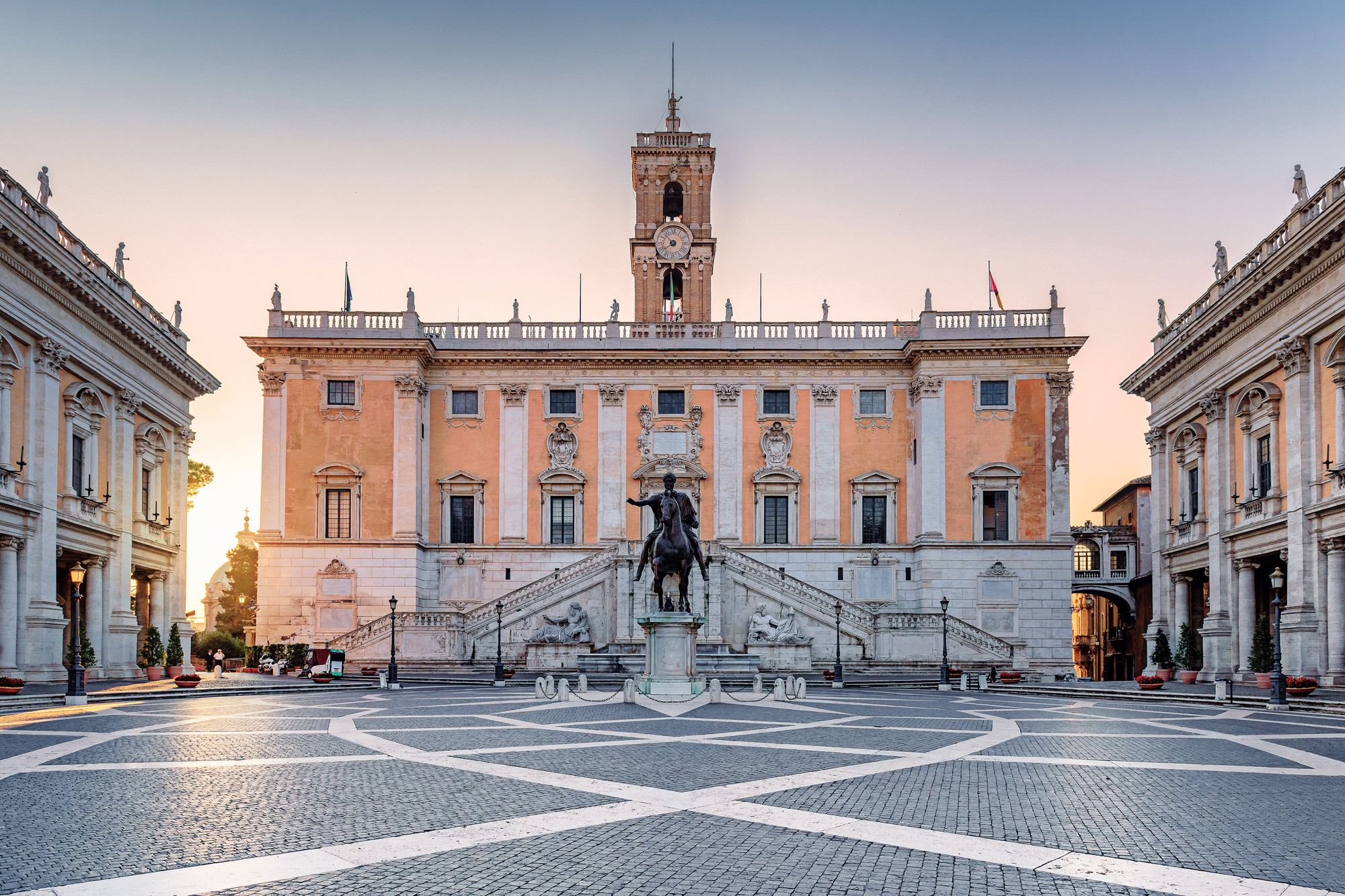
ackie Robinson, Joe Louis, Louis Armstrong… Their talents overwhelmed the issue of race, and so they broke barriers. Unlike those pioneers, most of us don’t have to approach No.1 standing to follow our chosen career paths. Case in point: Golfers. Of the roughly 200 players on the PGA Tour, few will become household names—but with a number of tours, teaching jobs and other opportunities, they can make a living in golf. That hasn’t always been the case. In the first part of the 20th century it was hard enough to make it as a white golfer. But black people were barred from PGA membership until 1961. And following that, they still weren’t admitted onto many of the tournament courses, weren’t treated well by fans, and didn’t have many options when it came to paying the bills with golf. So: no money, no accolades, and potentially a lot of abuse. If you were black in the 1960s, why would you want to be a professional golfer? Because you loved the game.
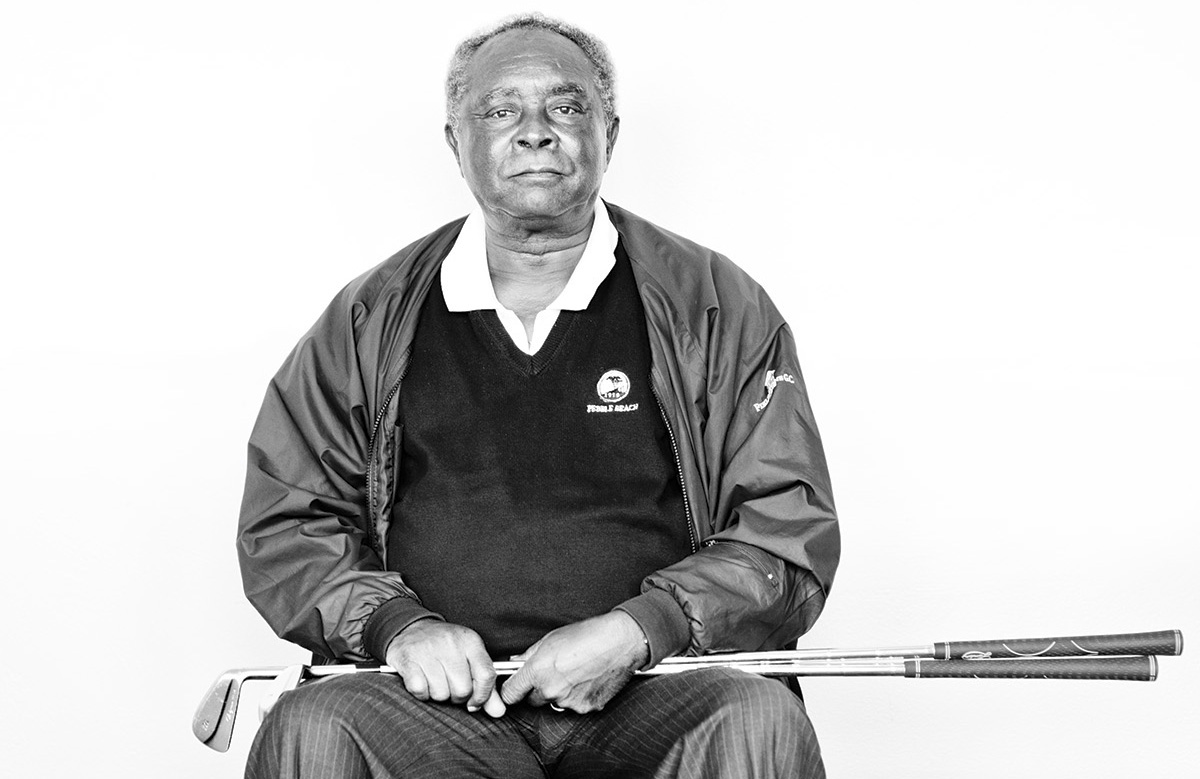
Born in a cold November in 1938, in the smallish town of Rocky Mount, North Carolina, James Walker Jr., would grow up to be a professional golfer. His family were laborers and farmers, and he was a black kid in the Deep South, after all. Like so many others, golf found him. And when it did, it was all that mattered.
“Well, the kids in my neighborhood, they were three, four, five years older than I was; we lived on the same block. They would go to the golf course and I would tag along with ’em on the weekends; this all happened in the summer of 1945. I was too small to carry the bags, so when I first started going I was the shag boy—if the pro had a lesson, I would chase balls.”
By the time he was eight, “Junior,” as he was known, was caddying at Rocky Mount’s Benvenue Country Club. During 12 years on the job, with borrowed equipment, he taught himself to golf.
“Oh yeah, I missed many classes. I missed many! I went to the golf course more than I went to school—shucks! Ha ha! The truant officer stayed on my case.”
Not that his parents minded.
“Well, my family was very poor, and so my father, he didn’t have too good a job, and my mother worked hard, y’know. I would go out and caddie some school days and make money to try to put some kind of food on the table. I would make maybe two dollars—two dollars went a long way in the ’40s, in the ’50s too. You could feed a family off of a buck.
“I grew up working hard because my mother, by me being the oldest, my mother took me everywhere she went to work. I would do country work. My mother had 11 brothers and they were all farmers. She would go to visit her brothers and I was like a little country boy, I had to do everything a farmer had to do—but I took my golf clubs with me.
“I hated it, I hated it. See, where I grew up is a tobacco town. That’s hard work. I picked tobacco, oh my goodness! Tobacco, cotton—I didn’t pick no cotton, though—corn, cucumbers, tomatoes… Everything a farmer would raise, I did it. I hated it, had my clubs with me, one or two clubs with me, and a few balls. In the afternoon, when the day was over, on a Saturday or Sunday, I could play, practice hitting balls in the open field, that’s how that went. But when you work, you work. You didn’t have time to be playin’ no golf.”
In addition to some cash, Benvenue offered Jimmy the chance to see the game. Amateur legend Harvie Ward grew up in Tarboro, just 17 miles away, and took lessons at the club. Jimmy shagged balls for Betsy Rawls there, and he caddied for Jackie Burke, Jr., when Burke and Tommy Bolt were in town on an exhibition.
When I asked Jimmy if anyone at the country club ever gave him a lesson, he looked at me like I was crazy.
“No! Didn’t get no lessons! Just picked it up and started hitting.”
Likewise, he looked even more incredulous when I asked if he practiced on the country club’s course.
“What? No! We didn’t play on the golf course! No, we made our own holes in this park across from where they hit balls, where we hit our own balls.”
But Jimmy did occasionally sneak onto the course at Benvenue, and it was during one of these covert rounds that he really found his game.
“I must have been about 13 or 14, so I went out on the golf course and I played. I didn’t start from the first hole; I started on the fourth hole, which was away from the clubhouse so they wouldn’t see me. I was skippin’ around and I got about 5 under par, and I didn’t want to stop. I would hit my drive and walk out of bounds, then run back on in bounds and play the second shot, then run out again. So I messed around and got 7 under par, but then I got too close to the clubhouse and so I had to quit. That’s when I realized I could play the game, and I loved the game, and I said, ‘This is what I want to do.’”
In 1959, Jimmy and a friend boarded a Greyhound bus and headed for New York City. He reckons he had about $50 in his pocket, and the bus ticket took $14 of it. There was a burgeoning black golf scene in New York at the time, though Jimmy hardly could have expected the surprise he found when he arrived on 121st Street in Harlem.
“When I got there, I saw all the guys I grew up with—must have been 10 or 15 of them, all the guys that were older than me from the block. I said, ‘Oh! This is like being home!’ I was 20 years old.
“I got me a little ol’ job working downtown in the garment section. I worked two or three weeks, maybe a month, and bought me a set of clubs. They were [Wilson] Sam Sneads. I started catching the subway to go up to Mosholu [Golf Course], up in the Bronx. I started going round there and I started playing good golf.”
People noticed.
“Word got around. They said, ‘Man, there’s this little guy from North Carolina that’s playin’ his butt off, can shoot in the 60s!’”
Jimmy’s reputation earned him an invitation to play with the Select Golf Club, a group of middle-aged black businessmen and enthusiasts in the city that took frequent weekend golf trips, usually to one of the courses in New Jersey, which were friendly to black golfers.
“We’d go to Asbury Park, there’s a few courses there. Essex County. We’d call the course in advance and tell ’em we’ve got four groups, five foursomes, six foursomes, and we gonna play. That was mostly in Jersey. That’s how I developed my game—and I had a pretty good game already.”
The club eventually invited Jimmy to go to Florida with them to compete in the annual North–South Tournament, held at Miami Springs Golf Course. As the first midwinter tourney open to golfers of any color, the North–South was a big deal. Calvin Sinnette describes it in his book, Forbidden Fairways: “These annual tournaments were not only important golf events, they were enormously popular social affairs… Entertainers, athletes and politicians came to see and be seen, and it was not unusual for as many as 300 businessmen and professionals to attend the event.”
For Jimmy, it was the first tournament of his life.
“I got a chance to meet all the top black golfers: Charlie Sifford [the first black golfer in the PGA], Pete Brown, Cliff Brown, Rafe Botts, Willie Brown… I can’t remember them all. Anyways, I was an amateur, and I must have finished about fifth in the tournament as an amateur. But before the tournament started they had a pro-am, held the day before. So anyways, the pros had to draw an amateur name out of the hat—they had about 20 amateurs, if not more—and each pro had to draw out a name, and so Teddy Rhodes drew my name out.”
“The pros had to draw an amateur name out of the hat for the pro-am—they had about 20 amateurs, if not more—and so Teddy Rhodes drew my name out”
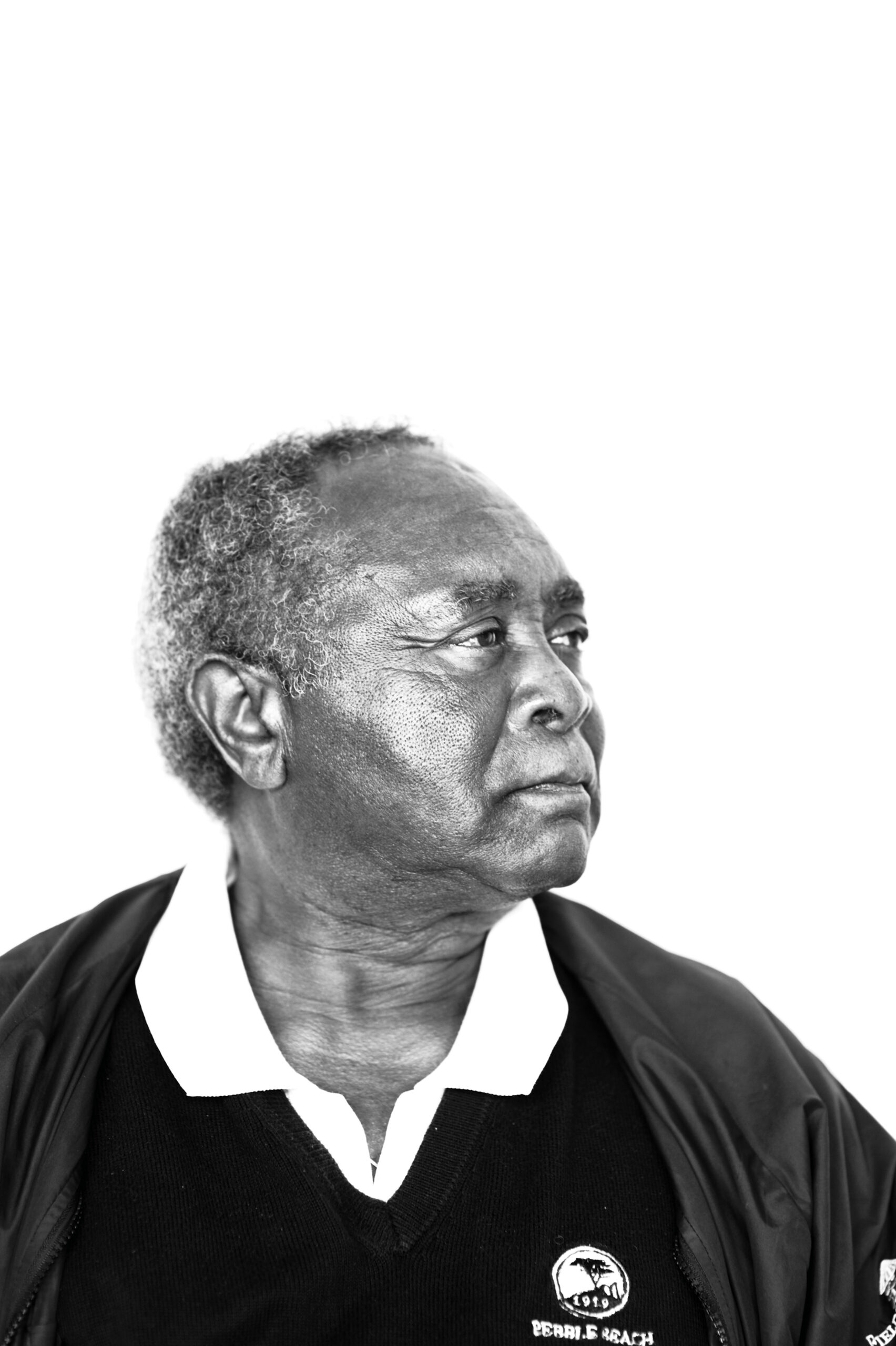
Born in 1913, Ted Rhodes was a legend by the time Jimmy got to Miami. We’ll never know how good Rhodes was because, like Bill Spiller and other luminary black golfers of the time, Rhodes had to contend with Section 1, Article III of the PGA’s constitution. The clause, which was added in 1943, limited PGA membership to “Professional Golfers of the Caucasian Race,” relegating Rhodes and his peers to events with the black-organized United Golf Association—sometimes referred to as the “Chitlin’ Circuit.” Rhodes won something like 150 such tournaments, cementing his place as one of the greatest in the game.
In 1961, the “Caucasian only” clause was removed from the PGA’s constitution, due to the efforts of Rhodes, Spiller, boxer Joe Louis, then-California Attorney General Stanley Mosk, and others.
But all of that came after Rhodes pulled Jimmy’s name out of a hat in Miami. And for the young golfer at his first tournament, there were more pressing issues—like making a name for himself.
“Teddy drew my name out, and he asked, ‘Well, who is James Walker Junior?’ And the guys from New York that brought me there, they said ‘He’s with us.’ And Teddy said, ‘Well, if he’s with you guys he must can play a little bit,’ so we went on out.
“So Teddy shoots 68 and I shot 69, and our best ball was 65, and we won, we won the pro-am. I don’t know how much money Teddy got, and I got a trophy—my first trophy, my first tournament.
“I took it home to my mother five or six years later, and I don’t know what happened to the trophy.”
After Miami, Jimmy headed back to New York and kept playing. The garment district job was long gone; he’d quit as soon as he had the money to buy his clubs. Instead, he was scratching around town for work, renting a small room on 121st Street and focusing on his game.
“I was washing cars and doing anything, odd jobs, washing cabs at night to make a paycheck to play during the day. It was all golf, everybody I knew or worked around was a golfer. Golf, golf, golf. If you’re playin’ golf you don’t get a chance to get in no trouble. I never been in any trouble in my life, ’cause it was all about golf.”
New York was hopping in the early ’60s, the Civil Rights movement was on, and the world was changing. But Jimmy’s world was all about the fairway; politics, nightlife and even girls weren’t really in the picture.
“Golf only. I didn’t have a chance to go out and try to get in politics or nothing, no. It didn’t bother me at all because I wasn’t involved in it, I wasn’t thinking about it. All I wanted to do was play golf.”
That’s not to say the game didn’t offer a social life—with the occasional legendary twist. One such example: Althea Gibson, the first black tennis pro (of either gender), two-time Wimbledon winner, and later the first black woman on the LPGA Tour.
“In the early days before I turned pro, Althea and I would go and play a lot together. I mean, the ground was frozen, wintertime. The ground was hard as a rock. We’d drive to Jersey somewhere and play. She had just got into golf. She could hit it a long way, but she couldn’t score worth nothing, ’cause she hadn’t been around golf that long to know how to hit shots around the green.
“She was nice, real nice. She was competitive, just like she was in tennis. She didn’t lay back. We all used to go to River Vale in Jersey, that’s where I first saw Sidney Poitier and Sugar Ray Robinson; they all played over there. Anybody that was anybody that was black went over there and played.”
His reputation solid, it was only a matter of time before Jimmy was approached about going pro.
“A friend of mine said ‘I got some guys that wanna try to put you on the Tour,’ and it was all Jewish fellas from New York. I didn’t know any of ’em.”
At the time the PGA required prospects to play with two Class A pros for an evaluation. Jimmy played with Stan Mosel, one of the better pros out of Jersey, and Wesley Ellis, a PGA veteran at the time. After a formal application process, he was accepted to play on the PGA’s tour for the 1965 season. It was a dream come true, but challenges were coming, and they started with money.
“Had a guy was supposed to be my manager… [laughs] Did he manage? No. As soon as I got on the tour and started playing, I couldn’t get the money to go from tournament to tournament, it was just a mess. But I had a chance, and all I wanted was a chance.”
“There were a lot of places you could only look at the golf course; you couldn’t play it until you had to qualify on Monday”
The first tournament of the year was the Los Angeles Open, held at the Rancho Park Golf Club where Jimmy now works as a teaching pro (and where Arnold Palmer once infamously made a 12 on the 18th hole). It didn’t go so well.
“I missed the cut,” Jimmy said. “They had just aerated the greens and I didn’t know how to putt. I must have three-putted eight times. I was playing with Mike Souchak and Dutch Harrison. It wasn’t my nerves, ’cause I wasn’t scared—I knew how to play. But it was like putting on dirt. That was a nightmare on the greens.” From there, Jimmy was off and running. Playing at a time when you had to qualify for each tournament, Jimmy made some and he missed some, but he kept going, sharing rides to events and enjoying life as a touring pro.
Whether or not it was happening, Jimmy said he was spared a lot of the racism that Sifford, Rhodes, Spiller and the other black golfers who’d come before him had experienced.
“The only time I had any problem was 1965. I went up to San Francisco to qualify for a tournament there. I missed qualifying, but a few of my friends were in the tournament, like Pete Brown, so I stayed around watching. I go to the clubhouse just to look at some clubs or something, and this little ol’ security guard, this little kid, he was smaller than me—I was small—he said, ‘No, you can’t come in this clubhouse.’ I said ‘Why not?’ He said, ‘You a caddie!’ I said, ‘I’m not no caddie, I’m a touring pro!’ He said ‘Caddies not allowed in here,’ and he wouldn’t let me in. So one of the fellas, one of the white pros, y’know, they seen me having this conflict with this guy, and they said ‘He’s one of us.’
Finally convinced this guy that I was on the tour. That was the only time I had any problems. San Francisco, and I had been down South, Mississippi, Alabama,
I had been all over the country. But the other pros had problems, y’know.”
One of the problems Jimmy and the others faced was not being able to practice on tournament courses due to membership rules. The result of this indirect segregation was that the first day of a tournament qualifier was often the first time a black player had ever been on the course.
“There were a lot of places you could only look at the golf course, you couldn’t play it. Never been there, never seen it before, but you couldn’t play it until you had to qualify on Monday. So you just go out there, sight unseen, and play the best you could. The white players, they could play with members. They’d play on a Thursday or a Friday because they could play a round as a member’s guest. For the blacks, they could only play it late Sunday afternoon. Walk out there, look at it, but they couldn’t play. If you got into a tournament, you were very lucky; that’s how that went.”
At the end of his rookie season, Jimmy lost his sponsor and his card. In 1967, he went to the PGA’s new qualifying school to get on for 1968, but missed by a shot.
In ’68, with a significant amount of leadership from Arnold Palmer, a number of pros broke away from the PGA of America and created what would eventually become known as the PGA TOUR. With the new group in place, Jimmy earned his card for the 1969 season, which started better than his first.
“My first tournament back, 1969, was the LA Open, so I go out and I shot a 67—leading the clubhouse so far, ’cause I was one of the first guys to tee off. So the 67 stood up until late in that afternoon. Charlie Sifford came in, teed off after 12. He shot 63 and he was the leader after the first round.”
Sifford went on to win the tournament, his second PGA win. Jimmy’s putting got away from him again, but he hung in there, played his final round with Billy Casper and Tom Shaw, and ended up tied for 30th. It was his best finish, but it wasn’t his most exciting. That, he said, came at the Westchester Classic in New York.
“My first round I shot 68… And the next day I was doing pretty good ’til the 16th hole: I made a triple bogey on a par 3, couldn’t get out of the bunker. So anyway I shoot 75, then 75 the third round—the third round I played with Charlie Sifford. The final round I shoot 69 and that moved me up. I finished tied for 30th, and that was my most exciting finish.”
By the middle of ’69, the sponsorships had dried up again, things got tight and Jimmy left the Tour mid-way through the season.
“I didn’t finish my year out. That was it, I didn’t try to play no more.”
Jimmy didn’t quit golfing, though. He played on what was left of the UGA’s “Sauerkraut Tour,” as he calls it, and in the early 1970s, he tells me he became the Negro National Champion, winning a short-lived tournament in Michigan called the Black Masters.
“The first year they had it, I won it. It was $3,000 or $3,500. That was 1972 or ’73, one of those years. I have the big ol’ trophy at home.”
The Black Masters faded—in part due to issues over the name—but Jimmy kept going, playing tours in Florida and on the West Coast until eventually settling into a job as an assistant pro at Madden Golf Course in Dayton, Ohio, working with Pete Brown, who’s still the head pro there.
A move to Los Angeles came in 1995 on the advice of the woman who, soon after Jimmy arrived, became his wife.
“We didn’t plan nothing. We were going to Vegas, and said ‘We oughta get married.’”
Inducted into both the African American Golfers’ Hall of Fame and the National Black Golf Hall of Fame, Jimmy returned to the site of his first professional tournament, Rancho Park Golf Club, and was hired as a teaching professional. He’s still there, in the first stall at the end of the range, teaching almost every day. “I love it,” he says.
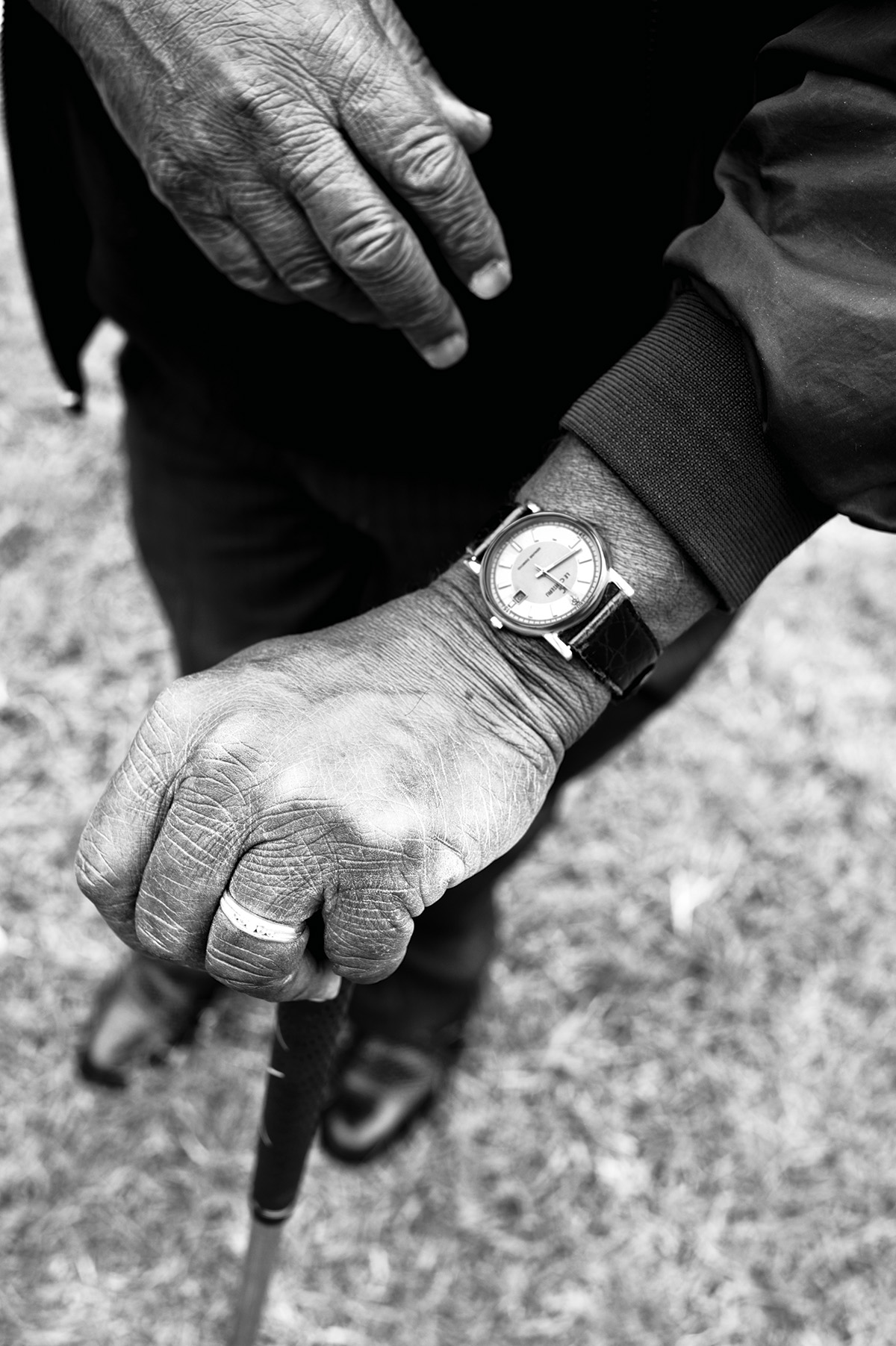
The man who never had a lesson, who, like so many early African American golfers, figured it out for himself without practice facilities, coaches or professional support, has achieved something that today’s players who have all of the above still find challenging: He’s made a living in golf. He’s also played with the best of the best in the game’s most distinguished pro ranks, a million miles away from the tobacco fields and improvised parks of Rocky Mount.
“Everything was nice on the Tour. That’s the best life you can have, I think, is a guy playing on the Tour. I haven’t seen any better. If you can play on the tour and survive, it’s almost like going to Heaven.”
“That’s the best life you can have, I think, is a guy playing on the Tour. I haven’t seen any better”
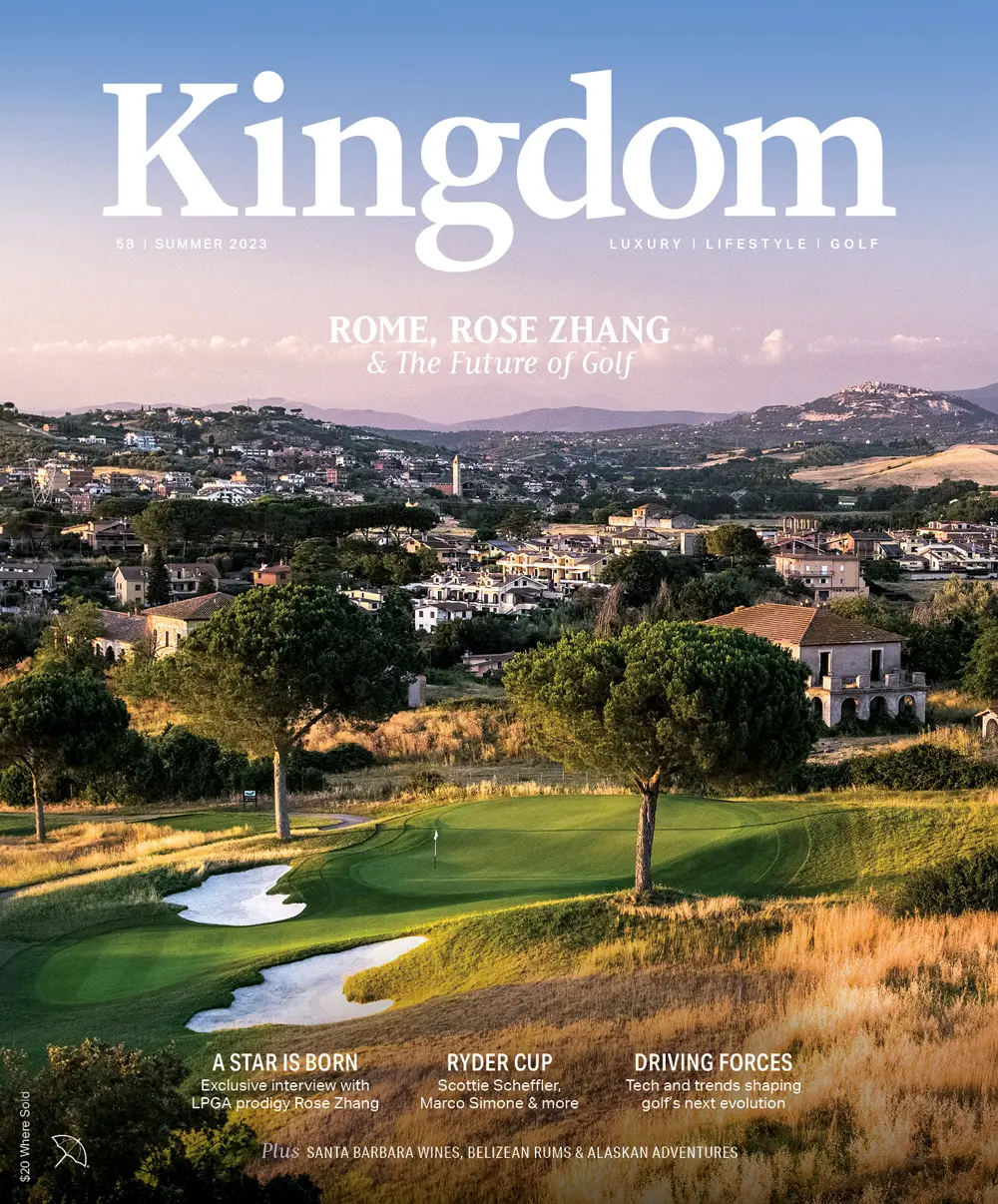
Follow Us On


| Cookie | Duration | Description |
|---|---|---|
| cookielawinfo-checkbox-analytics | 11 months | This cookie is set by GDPR Cookie Consent plugin. The cookie is used to store the user consent for the cookies in the category "Analytics". |
| cookielawinfo-checkbox-functional | 11 months | The cookie is set by GDPR cookie consent to record the user consent for the cookies in the category "Functional". |
| cookielawinfo-checkbox-necessary | 11 months | This cookie is set by GDPR Cookie Consent plugin. The cookies is used to store the user consent for the cookies in the category "Necessary". |
| cookielawinfo-checkbox-others | 11 months | This cookie is set by GDPR Cookie Consent plugin. The cookie is used to store the user consent for the cookies in the category "Other. |
| cookielawinfo-checkbox-performance | 11 months | This cookie is set by GDPR Cookie Consent plugin. The cookie is used to store the user consent for the cookies in the category "Performance". |
| viewed_cookie_policy | 11 months | The cookie is set by the GDPR Cookie Consent plugin and is used to store whether or not user has consented to the use of cookies. It does not store any personal data. |